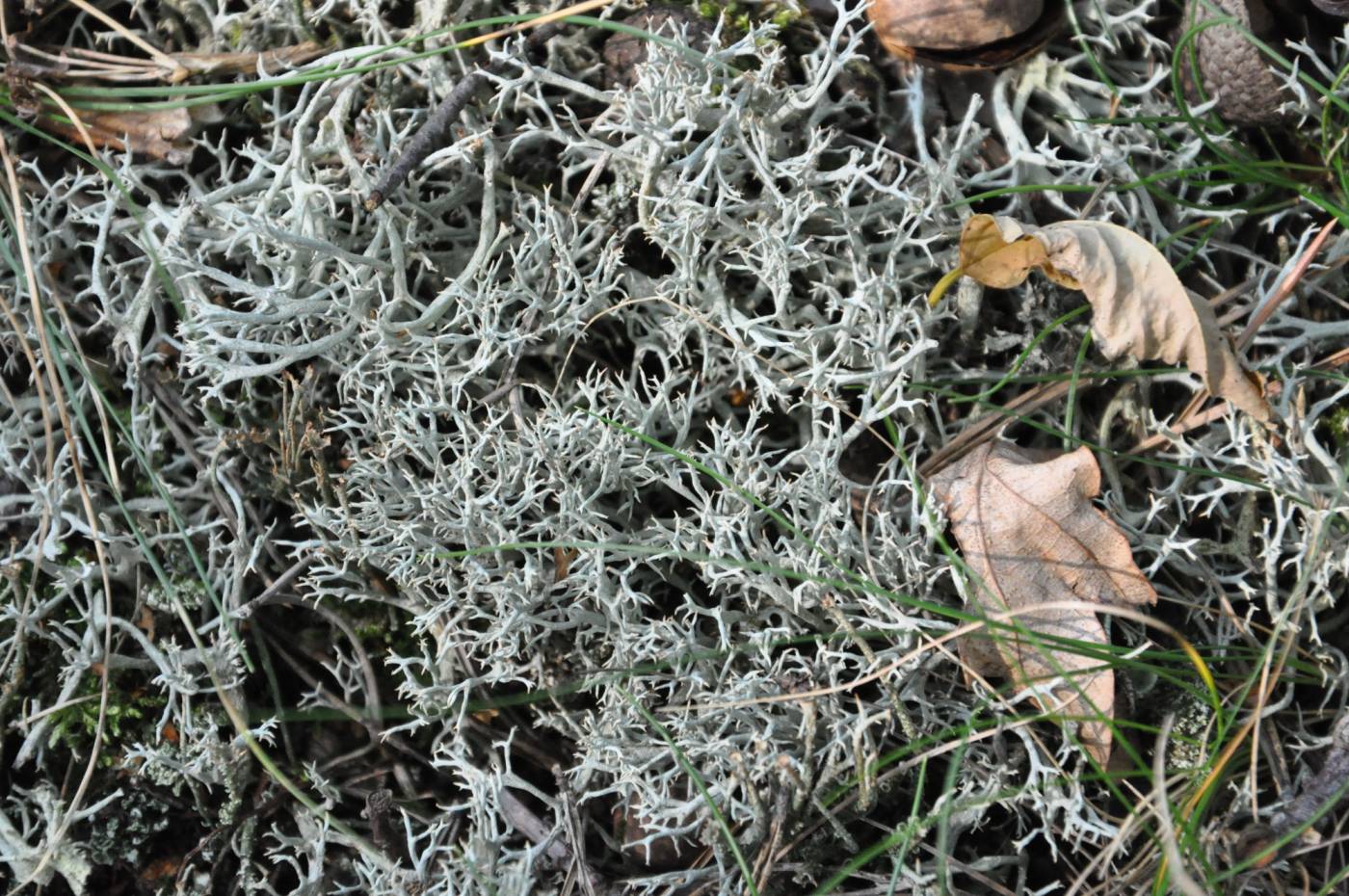A species very similar to C. uncialis subsp. biuncialis. They often grow together, so C. zopfii is easily overlooked. Nevertheless, the two species are not closely related (Stenroos et al. 2015). Cladonia zopfii differs mainly in bluish tinge of podetia, absence of squamatic acid and presence of terpenoids, which crystalize on the surface after a couple of years in herbarium. Other minor morphological differences can be found in Pino-Bodas et al. (2021).
The lichen grows on acidic sandy soil, sometimes even on waterlogged stands, such as peatbogs and heathlands. It is a typical oceanic species, mostly occurring in coastal areas of Europe. It is extremely rare in central Europe and is among the rarest Cladonia species in the Czech Republic. Here, it was first found in 1917 by J. Anders on sandy soil in pine forests near Sosnová in the Česká Lípa region (Anders 1920) where it was known from three microlocalities (Anders 1928). For a long time, it had been its only known locality, which was confirmed only a couple of years ago (Z. Palice & P. Uhlík, unpubl.). However, it has recently been also found in Prague, in a fragment of heathland on occasionally disturbed soil on slate bedrock, at the edge of a railway notch in Motol (unpublished).
Literature: Anders J. (1920): Die Strauch- und Blattflechten Nordböhmens. 2. Nachtrag. – Hedwigia 61: 351–374. Anders J. (1928): Die Strauch- und Laubflechten Mitteleuropas. Anleitung zum Bestimmen der in Mitteleuropa vorkommenden Strauch- und Laubflechten. – G. Fischer, Jena. Stenroos S., Pino-Bodas R., Weckman D. & Ahti T. (2015): Phylogeny of Cladonia uncialis (Cladoniaceae, Lecanoromycetes) and its allies. – Lichenologist 47: 215–231. Pino-Bodas R., Sanderson N., Cannon P., Aptroot A., Coppins B., Orange A. & Simkin J. (2021): Lecanorales: Cladoniaceae, including the genera Cladonia, Pilophorus and Pycnothelia. – Revisions of British and Irish Lichens 19: 1–45.
taxonomic classification:Ascomycota → Lecanoromycetes → Lecanorales → Cladoniaceae → Cladonia
Red List (Liška & Palice 2010):CR – critically endangered
Red List (Malíček 2023):C1 – critically endangered
Occurrence in the Czech Republic
All records: 2, confirmed 2. One click on a selected square displays particular record(s), including their source(s).
